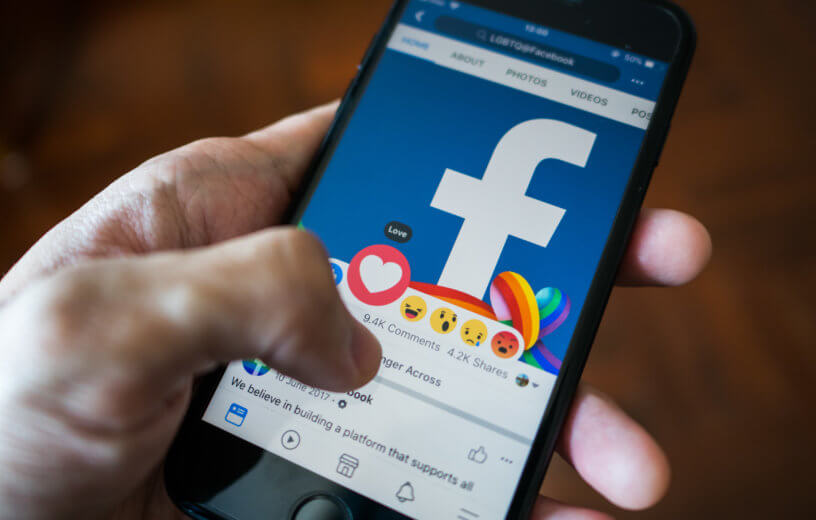COLUMBUS, Ohio — Countless news stories and articles are posted and discussed on Facebook every day, but researchers in Ohio are shedding some much-needed light on some of the stark differences in the quality and credibility of this information people encounter while scrolling around on social media.
Scientists at The Ohio State University analyzed 2.2 million news stories shared on Facebook, discovering two very different news environments fostered by various publishers. The two distinct ecosystems involve either low-credibility publishers, those that publish what is sometimes referred to as fake news, or high-credibility publishers.
Study authors report that while these two types of publishers often publish articles in bursts at the same time, a fairly common feature seen in news coverage, the content is often about different topics. Kelly Garrett, professor of communication at The Ohio State University, served as senior author for this project.
“These aren’t just random differences in what is being covered – there seems to be some systematic bias happening here,” Prof. Garrett says in a university release. “Low- and high-credibility publishers often give their readers distinct versions of what are the most important topics at a particular time.”
Study authors add these findings may hold troubling implications for news consumers as well as those trying to fight the spread of misinformation online. The team behind this work had access to a unique collection of anonymous data from Facebook pertaining to the sharing of online news content on the platform. Researchers originally set out to assess the supply of low-credibility information, which they explain is potentially capable of negatively influencing what people learn in relation to science, politics, and their community.
More specifically, researchers examined over two million online news stories shared at least 100 times by Facebook users between February 2017 and April 2019.

Publishers were placed in the low-credibility category if included in one of six lists of low-credibility news domains created by reputable fact-checkers and scholars, or, if they had produced more than five articles labeled as problematic by Facebook fact-checkers. Examples of publishers marked as low-credibility include Breitbart News Network and Daily Kos. High-credibility sites (New York Times, Wall Street Journal), meanwhile, were identified by two academic sources of traditional news sites.
The research team looked for bursts of coverage that occurred when many outlets ran stories on the same topic at the same time. Consequently, they discovered numerous bursts of coverage concerning the family of Barack Obama, the Trump Organization, Medicaid, NASA, and the Emmy Awards, among various other topics.
The study also found that low-credibility publishers tend to converge on stories about politics and the government more often than high-credibility publishers, whose topics ranged more widely. Also, after periods of relative quiet in terms of the number of stories run, publishers would often put forth bursts of coverage. Notably, both high and low-credibility publishers tended to put out bursts of coverage at the same time – yet cover different topics.
When high-credibility publishers published a burst of coverage on a specific topic – Trump or NASA, for example – low-credibility publishers also covered the same topic just 40 percent of the time.
“That’s not trivial, but it is lower than what we would expect if credibility played no role in what these outlets covered,” Prof. Garrett adds.
Ultimately, this research doesn’t reveal why the two types of publishers tend to release bursts of coverage on different issues at the same time, Prof. Garrett says. Still, these findings are consistent with the belief that some partisan news outlets try to counteract negative news about their ideological side by diverting attention to another news topic.
However, Prof. Garrett admits ideology is not the biggest divide between the two types of publishers in this study. While the researchers did find, as expected, differences in coverage based on political ideology, the biggest difference in what publishers covered turned out to be based on credibility, not a partisan stance.
“We would expect conservative- and liberal-leaning publications to behave like other outlets that share their ideology, and they do. But we see the credibility divide is even bigger than the ideological divide in determining what topics they cover,” Prof. Garrett comments.
“In other words, publishers’ preferences for covering topics covered by outlets of similar credibility is much stronger than their preference for covering topics of outlets sharing similar ideology.”

Low-credibility publishers were originally distinguished from high-quality publishers by how they report the news. These results, though, indicate the difference runs deeper; it’s what they cover and how they report it.
High-credibility publishers have long been considered as following “pack journalism,” meaning news outlets look to see what stories other similar outlets are covering to determine their own story selection.
While this project can’t say for sure, researchers theorize the same may be happening among low-credibility publishers. Although to be clear, their definition of the most important stories of the day is often quite distinct from their high-credibility peers, Prof. Garrett clarifies.
“Low-credibility publishers may have a different set of news values than the high-credibility publishers,” the study author says.
These findings suggest it may be even more difficult to counter “fake news” put out by low-credibility publishers than many assume. Fact-checkers often work at the story level and focus on correcting misinformation put out in one article by one particular publisher. This study suggests bursts of coverage among low-credibility publications may be promoting misleading information on the same topic across a variety of forms and news outlets.
“We tell people that they should get their news from a variety of sources to reduce the risk of being misled. But that doesn’t work as well if many low-credibility outlets are talking about the same stuff,” Prof. Garrett concludes.
“There’s a little more nuance to what it takes to be a well-informed person. You can’t just be reading multiple news stories. You have to be reading sources that are well known to be credible.”
The study is published in the journal New Media & Society.


The problem with this is that the truths and science right now are constantly changing. With the advent of this pandemic, everything is too new to be definitive. And, too often lately, we learn that the facts were hidden or manipulated to make something true that turned out later not to be true. Remember, lobotomies were once a standard of care; so was blood-letting. We need to be very, very careful about credibility labeling when it comes to declaring the origins of this pandemic, especially as more and more information leans toward the pandemic being the result of a lab leak.